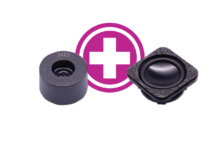
Augmented reality (AR) technology has been increasingly adopted in various industries, including healthcare and dentistry. AR offers transformative solutions in dentistry, especially in addressing patients’ concerns about expensive procedures. Since many dental treatments beyond routine cleanings can be costly and might not be fully covered by insurance, there’s a hesitancy among patients to invest. This is particularly true for cosmetic procedures like orthodontics, but AR can help bridge this gap. By visualizing potential outcomes using AR, patients can see a real-time simulation of post-treatment results. This not only provides clarity but can boost confidence in the procedure, potentially increasing the likelihood of patients moving forward with treatments.
Additionally, AR is being used to train dental students in various procedures by overlaying digital images onto real-world environments. For instance, students can practice dental surgeries using AR to visualize underlying anatomical structures, which can help them understand the complexity of the procedure and reduce mistakes.
In more advanced applications, AR can provide real-time navigational assistance during dental surgeries, helping dentists pinpoint exact locations and follow pre-planned surgical paths.
Treatment Planning and Visualization
Some dental procedures require intricate planning. AR can assist by overlaying 3D models onto the patient’s actual anatomy, giving a real-time view of the potential results. This can be especially useful for surgeries or orthodontic treatments.
Align Technology is a US-based producer of 3D digital scanners and Invisalign clear aligners (Figure 1) utilized in orthodontics. The company is renowned for its Invisalign system, a clear aligner treatment for teeth straightening. Invisalign is primarily associated with clear orthodontic aligners and not directly with AR technology. However, Invisalign utilizes advanced 3D imaging technology to plan and design patient treatment.

The iTero Element Scanner is a 3D digital scanning system used by many Invisalign providers. It captures a detailed 3D image of the patient’s teeth and gums. This can be likened to a kind of “AR” in that it provides a digital model of the patient’s mouth, which can be manipulated and viewed from different angles for better treatment planning.
This AR-like technology uses ClinCheck Software to generate a 3D-captured model of the patient’s teeth. The dentist or orthodontist can then manipulate the model to show the planned movement of the teeth throughout the treatment, effectively visualizing the end result.
Once all the 3D scans are taken, the software allows the dentist to map out the entire treatment virtually. Patients can see a simulation of how their teeth will move over time and what they will look like after the treatment (Figure 2).
Invisalign’s use of advanced imaging technology and virtual simulations, while short of full AR, continues to evolve, and it would not be surprising to see further integration of AR tools into this type of clear aligner orthodontics treatment.
Featured Products
This week, we spotlight cutting-edge offerings from Micron® and BittWare. Catering to the robust computational demands and vast storage prerequisites of AR, these products promise seamless virtualization capabilities. Dive in and discover how they are shaping the frontier of AR technology.
Micron® 6500 ION NVMe™ Solid-State Drives (SSDs) are the world’s first data center NVMe SSDs with over 200 NAND layers. The Micron 6500 ION SSD provides a major advancement for data centers by lowering operating costs and improving storage efficiency. They are designed to keep pace with the accelerating growth of data. These high-capacity SSDs offer a superior value over the competing QLC-based drives by providing best-in-class performance and enabling a more environmentally sustainable data center. The Micron 6500 ION reduces upfront purchase costs by coming in at a comparable price point to the competing QLC SSD2 and lowers annual operating expenses by reducing power/cooling and server/software license costs through chassis consolidation. They also reduce e-waste by delivering storage that lasts longer—all while outperforming and outlasting the competing QLC SSDs and saturating 400GbE networks with ease.
Aside from lowering operating costs and a massive 30TB storage, other key benefits of Micron’s 6500 ION SSDs include faster reads, writes, fills, and rebuilds compared to competing data center QLC SSDs, making it easier to store and maintain massive datasets. Additionally, these drives have:
- 34 percent better average read latency
- 58 percent faster sequential writes
- Up to 62 percent more 4KB random read IOPS
- Over 30X more 4KB random write IOPS at a queue depth (QD) of 128 and over 10X more at QD1
Micron’s 6500 ION SSDs are ideal for artificial intelligence data lakes, object stores, general-purpose bulk cloud storage, NoSQL databases, and content delivery. For data centers that need to scale storage density affordably, the Micron 6500 ION SSDs are the answer.
Boasting the prowess of the Xilinx Virtex UltraScale+ FPGA, the BittWare XUP-P3R FPGA Accelerator Card is a 3/4-length PCIe x16 powerhouse. This card shines in applications demanding peak performance, immense bandwidth, and minimal latency, thanks to the UltraScale+ devices tailored for substantial data flow and packet processing. Key features include:
- A whopping memory support of up to 512GBytes.
- Advanced clocking and timing functionalities.
- Four QSFP front-panel cages, each with a capacity of up to 100Gbps (4×25) – compatible with 100GbE.
Enhancing its adaptability, the XUP-P3R is equipped with a Board Management Controller (BMC) for precise system monitoring, streamlining platform integration and management. This consolidation of features positions the XUP-P3R as a top pick for diverse data center tasks, spanning network processing, security, acceleration, storage, broadcast, and SigInt.
Tuesday’s Takeaway
Integrating AR and advanced 3D imaging technology into the dental sector showcases a pivotal shift towards enhanced patient care and advanced training methods. By addressing both the apprehensions patients may have about uncertain treatment outcomes and the challenges dental professionals face in procedure planning, AR emerges as a beacon of progress. Invisalign’s venture into advanced 3D imaging mirrors the potential that lies in blending cutting-edge technology with healthcare. While Invisalign’s current offerings may not fully encompass AR in its entirety, the trajectory is clear: the convergence of AR and dentistry promises an era where patients are more informed, professionals more equipped, and treatment outcomes more predictable.
This week’s cutting-edge product offerings from Micron® and BittWare present state-of-the-art solutions tailored for AR’s intense computational and substantial storage needs. These products excel by offering seamless virtualization capabilities, perfectly aligning with the demands of modern AR applications.
The blog is published with permission from Mouser Electronics. To read more such content visit Mouser’s Blog.



















